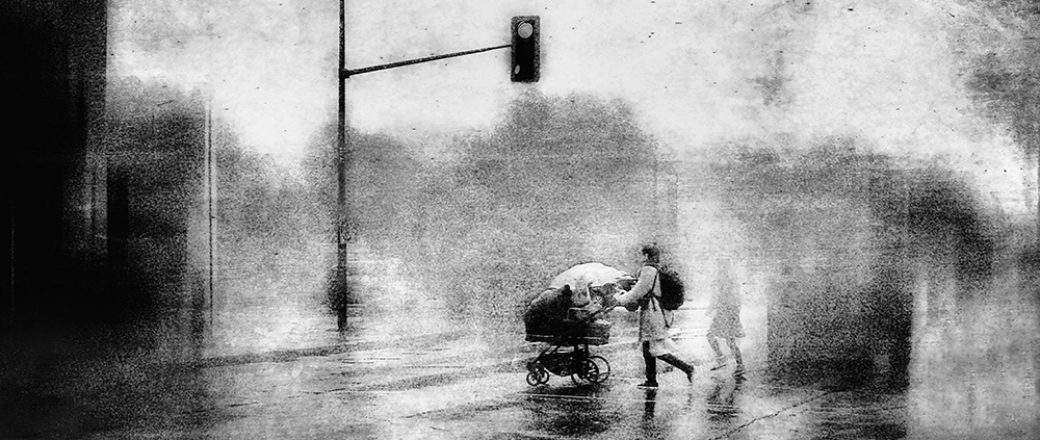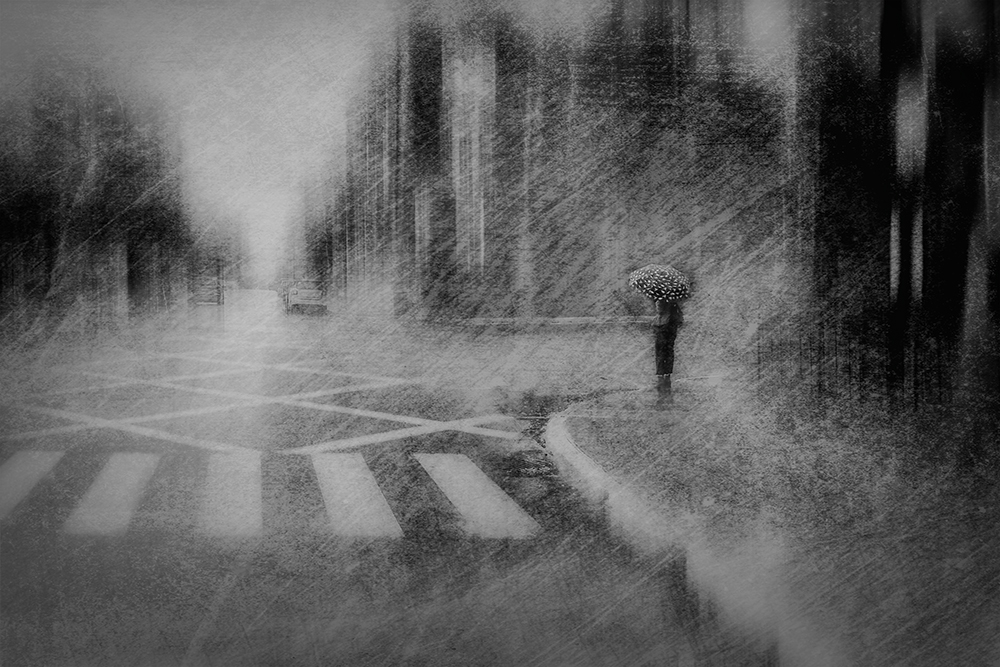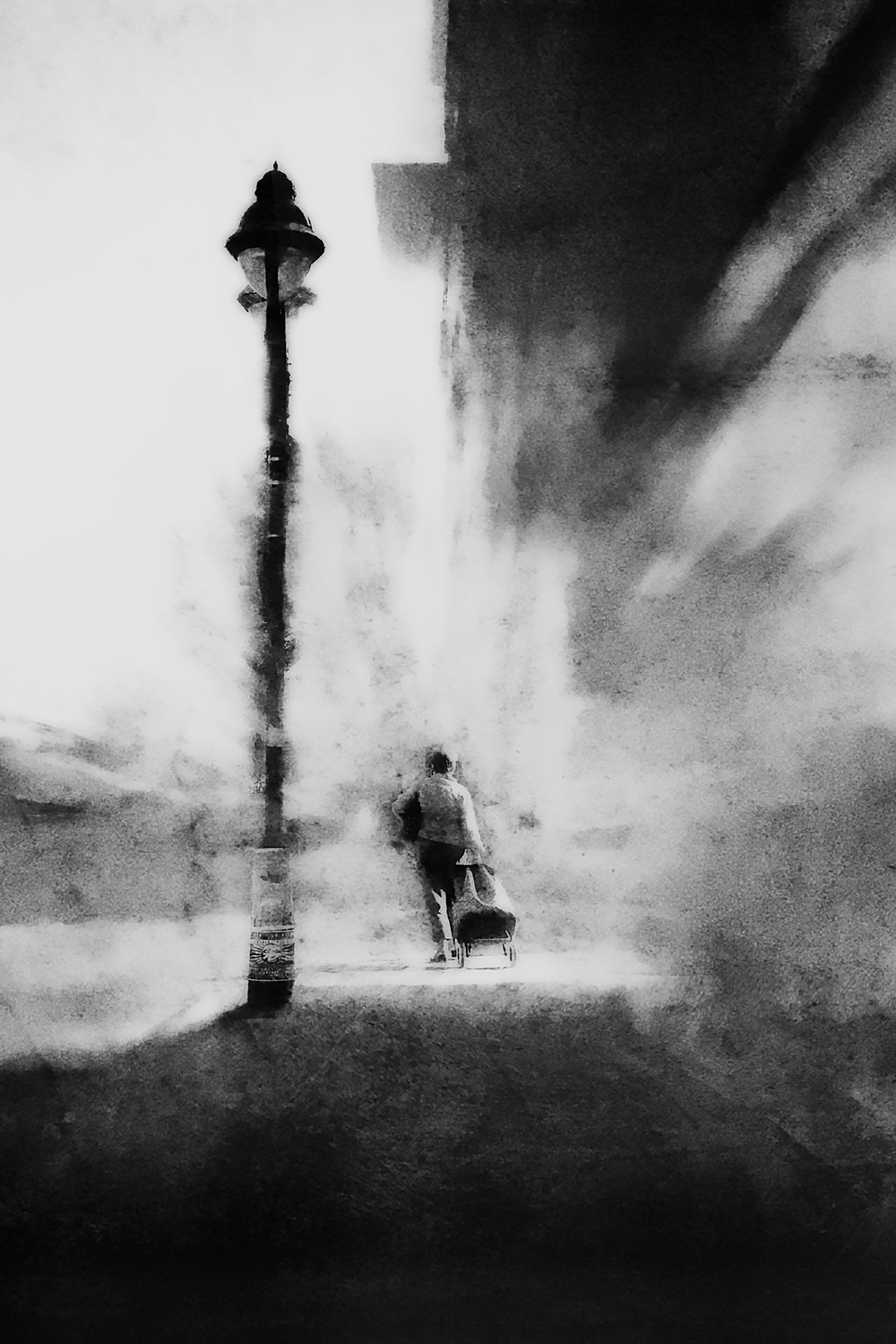How and when did you become interested in photography?
In 1979, as a member of a youth association, I had to choose an activity for the upcoming session. Naturally interested in science and experimentation, photography seemed a very fascinating activity since I could have access to a dark room and improve my knowledge in that particular field, I then discovered that photography was an endless source of learning. We were a group of audacious youngsters who wanted to learn. However, since the resources were limited to the few books left in the lab, we still managed to get by with the trial and error method and personally, it is still an integral part of the photographer’s work even today.
Our working methods of the time did not really have a technical framework and limits, the technical words and the specific methods of creation were totally unknown to us, the only known basis was the essential, how to finish a roll and how to finish a photo purely for black and white imaging.
Personally, even in those years, I did not like to depict things as they were and especially in street photography where the imaging must follow strict rules. This naivety and candor allowed us to be creative to the point of creating overlays that could be used in a dark room. A plate of glass over the paper and various translucent materials were added on the glass as long as the light could pass through, not to mention our motley techniques for dodging, burning, sabattier effect, multiple exposure and so. And that’s how my fascination with textures and post-production started.
Is there any artist/photographer who inspired your art?
The photographic style and personality of Saul Leiter is, in my opinion, the pure definition of audacity. In his remarkable period of color, Leiter made us discover his way of seeing his neighborhood in a unique vision. The simplicity, emotion, and audaciousness in his works, as well as the modesty of the character himself, made Saul Leiter a reference and a great source of inspiration in photography as well as in life in general. His legacy is an endless source of inspiration.
Why do you work in black and white rather than colour?
Actually, my only series “Quotidian life” on which I work for almost 2 years consists of a color chapter and a black and white chapter. I have a deep attachment to black and white since when I started photography in 1979, it was all we could do with the material we had and we exploited the technique in all the ways possible. Forty years later, I still have the same feeling I had at the time of the darkroom when working on b&w images.
How much preparation do you put into taking a photograph/series of photographs?
First and foremost, my work is one of a street photographer. From this field work, in a post production stage, I’m emphasizing the mood I was in and add atmosphere, dramatizing my imagery, thus challenging the strict rules of street photography which may displease some purists. This post-production work aims to illustrate another aspect of street photography that the viewer’s eye can not see since going beyond imaging itself and it’s all about feelings and emotion. As some people just can’t believe it’s possible to take photography in new directions and to avoid any ambiguity as to the photographic style, let’s then call it ‘Creative Street Photography’.
In my works, bad weather and dark mood are omnipresent. I like to shoot on dark days and rainy or snowy days. One of the reasons is that the subjects are in a state of resilience and it shows in their attitude and gesture and that brings mood to the images. Another reason is rather one that adds to the compositional geometry and it is the reflection on the wet surfaces that will lengthen the verticals, these reflections are very subtle and without disturbing the eye they add to the general aesthetics of the image once post-processed.
Basically, in my opinion, photography is all about compositional geometry and aesthetics. From these premises the core of my work when working on an image, consists in fading distracting constituents and “spotlighting” elements of interest that will obviously add to the geometrical aspect of the image.
This post-production work begins right at the shooting. The first aspect that I consider is in fact connected to the lighting and of course to the exposure of the points of interest, the subject having to present a detachment as compared to the whole framing thus separating him from the rest, since overall, he is the main character of the story. I’ve noticed that single character compositions have a lot more impact than a composition with several. I explain this by the fact that it is naturally easier to relate to a single character story as opposed to a group where you feel more like an intruder in the story and much more difficult to relate to. Although there may be exceptions, as a character who isolates himself from a group by doing the opposite of the others will not only detach himself but will amplify this detachment in the whole frame where the viewer will easily relate to .
Post-production is not just a simple step in the development of an image, it is a way of enhancing a story, as well as a way of depicting your mindset of “the moment”.
Where is your photography going? What projects would you like to accomplish?
In regards with the artistic production, I will definitely continue to grow my series “Quotidian life” as I still have a lot to learn about the human aspect that emerges from this series that fascinates me.
I wish to start a new series but I still can’t connect to a subject, that I would like to be as nourishing as that of my current series “Quotidian life”.
Website: https://dancastudios.com/




















